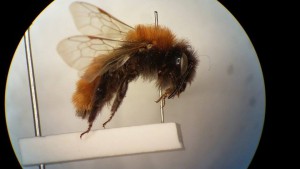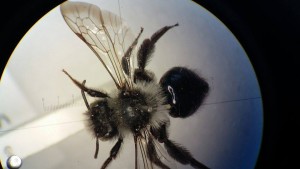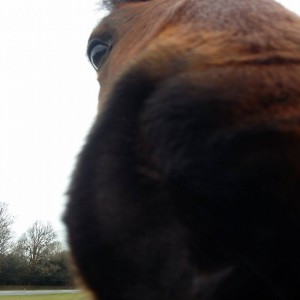
Hi there!
My name is Lorna and I’m the new TCV Natural Talent Trainee based at the Liverpool World Museum. This coming year I’ll be looking at pollinators of created meadows. With a particular focus on lesser known groups such as solitary bees and hoverflies.
In the past I’ve had my fair share of experience with pollinators; such as butterflies, moths and bumblebees. But I’ve always wanted to learn about and ID the ‘harder groups’. In the past these important insects have been tantalising but have appeared somewhat inaccessible to me. Hidden behind complex sounding latin names and some being difficult to ID without a microscope. But now thanks to Esmee Fairbairn Foundation, TCV and my placement partners (Liverpool World Museum, Landlife and Merseyside Biobank) I have the opportunity to learn about these fascinating creatures and share with people how important they are, how they live their lives and the role that created meadows play in providing for these insects.
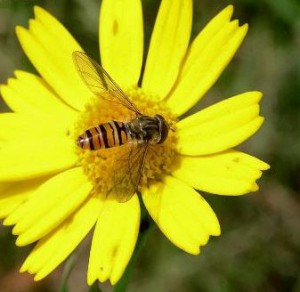
The Marmalade Fly (Episyrphus balteatus) on corn marigold. The only hoverfly I knew before the traineeship. Looking forward to learning a lot more!
So far in my traineeship things have been all go! Meetings tons of new people (many many names to remember!), the first month certainly has been a swirl of activity. Between looking over created wildflower meadows to be used for future sites in my project, Andrena (solitary bee) species ID course, being introduced to Mapinfo, attending meetings to get involved with Bioblitz and training events at the museum and elsewhere. Being trained on how to use Mimsy XG, the in-house software used by the museum to catalogue and document all artefacts and specimens in the collections. Even learning to use twitter for the first time. It’s been fairly busy!
But one of my best experiences so far has been my week down at the Oxford University Museum of Natural History (OUMNH) meeting two of last years Natural Talent trainees: Ceri Watkins and Liam Olds. Both incredibly knowledgeable people. Even got to learn a little something about dung beetles!
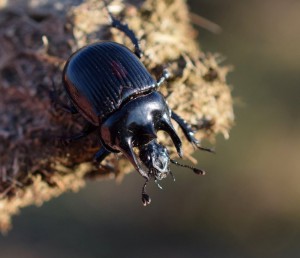
Found this male Minotaur beetle (Typhaeus typhoeus) whilst surveying with Ceri. A cool looking dung beetle! They aren’t pollinators, but still very important!
Whilst I was there Liam shared his ID skills with me and went through some introductory hoverfly and solitary bee identification techniques. I was particularly impressed with the leafcutter bees. Everyone is familiar with bees carrying pollen on their legs. But these little critters carry them on the underside of their abdomen! How cool! And some of males have lovely little yellow mittens on their front legs (i.e. enlarged tarsi).
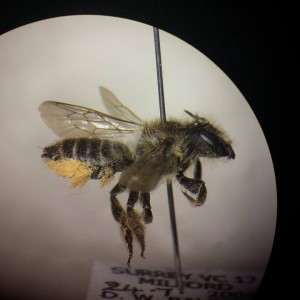
Patchwork Leafcutter bee (Megachile centuncularis) female has her pollen baskets on the underside of her abdomen!
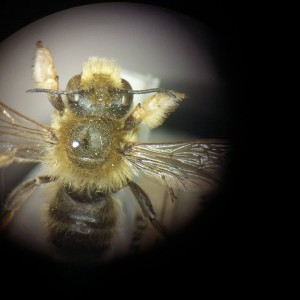
Willughby’s leafcutter bee (Megachile willughbiella). Males of this species have enlarged yellow tarsi.
And I even got to go to the Natural History Museum in London to attend the Verrall lecture, where the head of Coleoptera at the museum gave an inspiring and thought provoking lecture on the importance of collections – about how pivotal they are in understanding and protecting biodiversity worldwide. Which led onto the Verrall supper an annual meeting for entomologists!
So all in all I’ve gotten to meet some really nice people and have begun to scratch the surface of hoverflies and solitary bees. Looking forward to when they start coming out.
Can’t wait to see what next month will bring!


